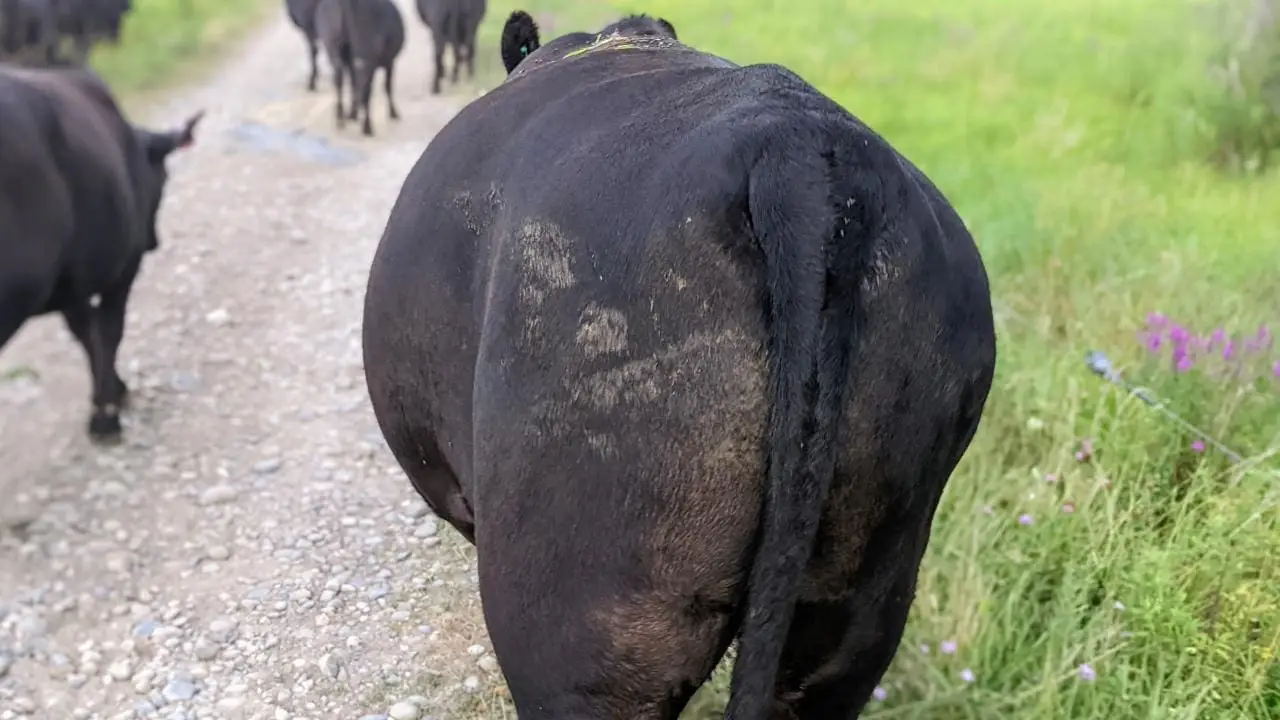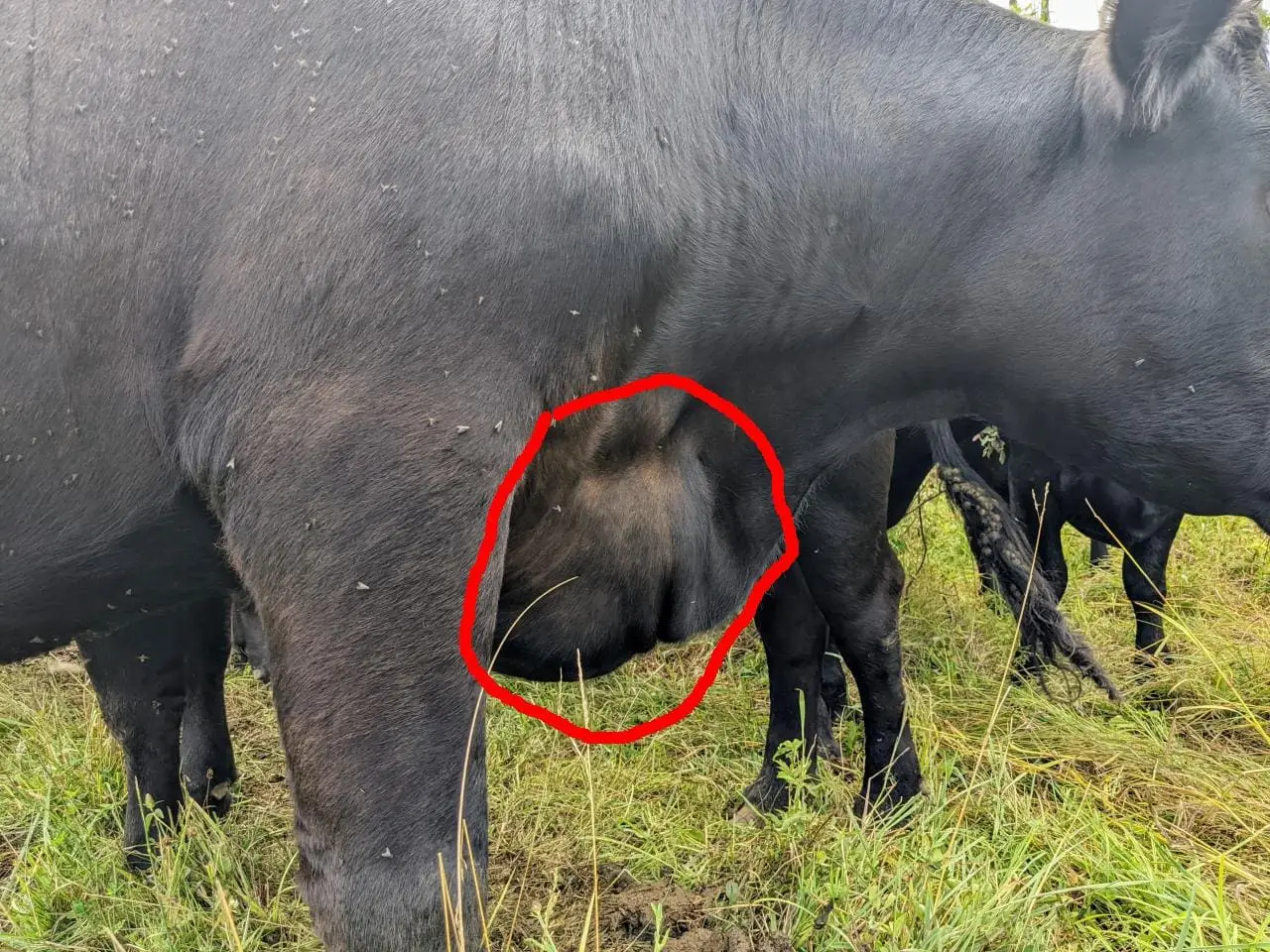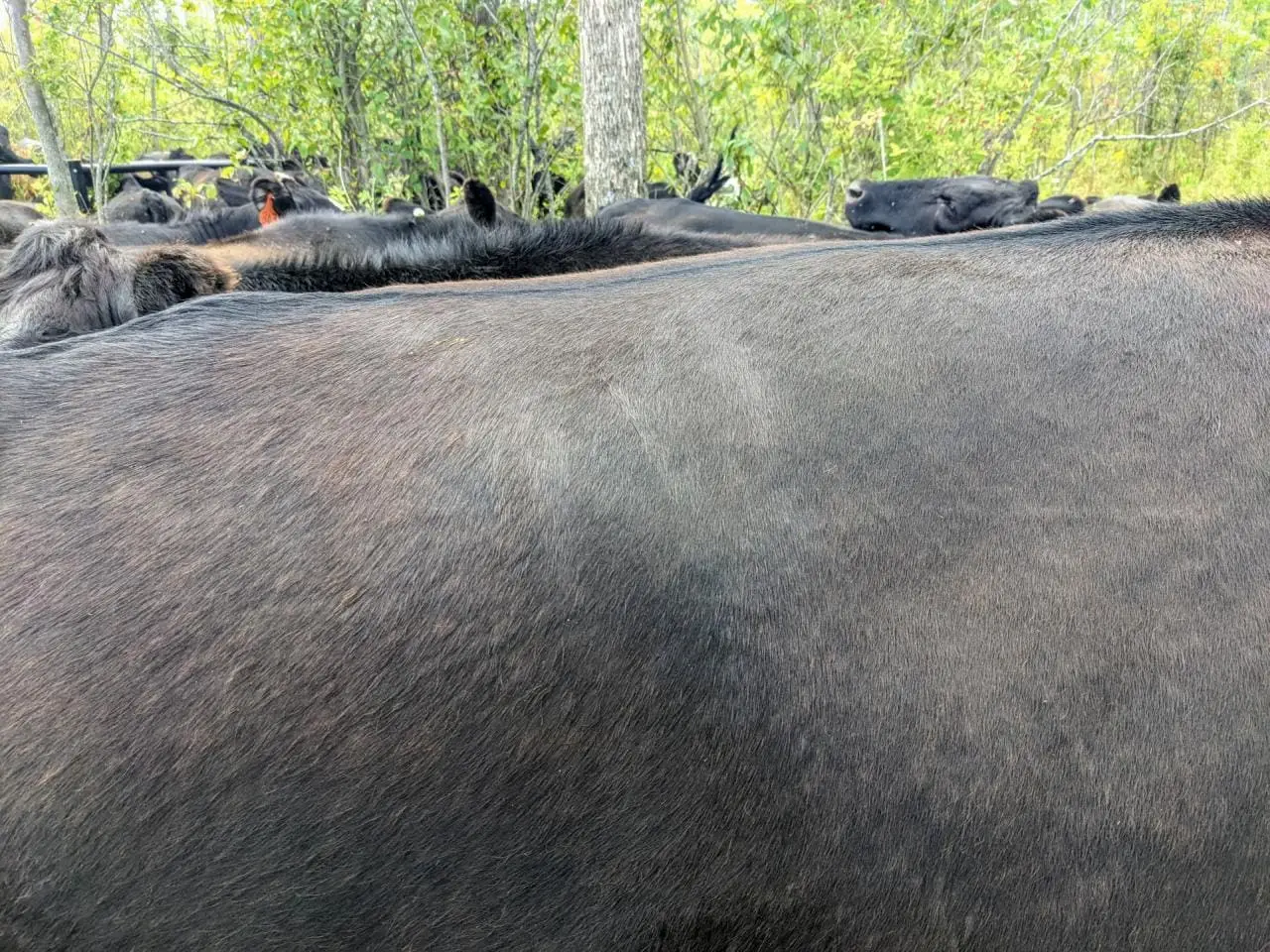We’ve talked a lot about what we mean by grass fed and grass finished, but it might be helpful to show some photos to illustrate what we mean when we judge that a steer or heifer is at the stage of development that we call “grass finished.”
It is important to preface this by noting that what I call “finished” might not be the same description as others would use. First, because our cattle are only eating grasses and pasture plants, and they never are eating grains or grain byproducts, they don’t bulk up as much as cattle on a starchy feedlot diet. And second, different breeds of cattle will have different phenotypes, so even being raised side-by-side on identical pastures we’d find that various types of cattle look a little different at finishing.
We find that our cattle reach an ideal finish at about 24-28 months old. There are outliers, a few that shoot up quickly and a few that never seem to grow, but we can reliably get the majority of the herd up to the right size a little past the two-year mark. Based on the genetics in our herd, at these ages the steers will achieve a carcass weight in the high 600 to low 700 pound range, and the heifers will weigh about fifteen to twenty percent less. We have a few diminutive Belted Galloways mixed in with the rest, but for the Angus herd the sizes are consistent.
We could weigh all the cattle. Or if we wanted to be fancy, we could even ultrasound them to measure ribeye development as that technology has become more commonplace. But part of our philosophy is about reducing stress for the cattle. We really don’t want to bother them, and running them through chutes, onto scales, and poking and prodding every time we need to sort them just adds unnecessary hassle to their lives. So when it is time to load up cattle for the butcher Rachel and I do all the sorting by eye. Here’s what we’re looking for…
The Tail Check
My first check in judging finishing quality involves looking at the base of the tail. A growing calf will have a tail that prominently stands out from the pelvis. Over time the gap around the tail and the pelvic bones is filled out by layers of muscle (mostly muscles that make up the sirloin) and then finally by a cap of fat. When I see a tail surrounded by a healthy mound of fat, that’s a great indication that I’m looking at a finished animal.


The Brisket Check
Next I check the brisket area. The brisket should be filled out and held prominently away from the chest. On immature cattle the brisket is narrow, so for a finished steer or heifer I’m looking for some bulky development here.

The Back Check
My last check is to scan across the back of the animal. This one is the most subjective, because momentary changes in posture, time elapsed since the last meal, and the shagginess of the hair can trick my observations. But I’m generally looking to see a barrel-shaped back. The spinal column should be fully filled over, so I if I were to pass my hand over it I wouldn’t feel any of the bones. All the muscling around the hips should be developed sufficiently to render the hip bones just a slight prominence. Ideally, the skin should gently curve across an expanse of back and then down over a broad, smooth ribcage.

So that’s the summary on what we’re looking for in our grass finished cattle. And I realize I made it sound like I’m a methodical, even dispassionate, judge of cattle. But that’s not the whole story. Whenever I’m looking at a group of well-finished cattle, I feel a strong sense of privilege that I get to be with such amazing animals and to participate in these cycles of food production.
For as long as I’ve spent with cows, I’m always surprised by how well-suited these creatures are to our environment here, and how they can take what to us is the inedible biomass of leaves, and how they can grow these large bodies from it. Whenever I eat our beef, I never fail to picture the story behind each meal. This is not hyperbole. My mind cycles through the amazing transformational chain of solar energy into plant matter into cattle and then into myself. Each meal grounds me to specific fields, specific seasons, specific cattle. I find that to be a settling feeling.
I know that it might be harder to pass this same sense on to all of you who live apart from the direct daily experience of farming. But I hope that in sharing our farm’s story that some aspect of that connectedness can jump the gap.

4 thoughts on “What Grass Finished Cattle Look Like”
Hi Dave, Thank you for taking the time to write your articles about farming. I appreciate and enjoy your sharing the farm experience with us.
Eileen
Thanks for the encouragement Eileen! Dave
I love your thought process and philosophy of life you share. We ordered our first “sampler” box of beef, chicken and pork I picked out and enjoyed everything we’ve tried. I’m gradually making room in my freezer to get a larger quantity in the future.
Thanks Annette, I’m glad to hear you’re enjoying the food! Dave